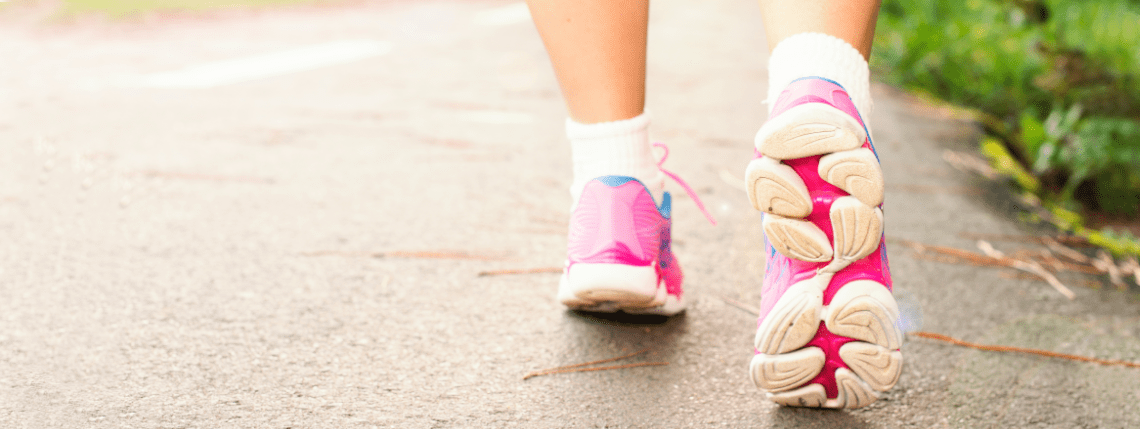Walking. The most foundational and functional movement pattern we do every day. The implications of poor walking metrics are actually a huge predictor of vitality and longevity. In fact, a 2009 publication by Fritz et al referred to gait as the sixth vital sign. According to Fritz, the aspect of gait that is the most reflective of function is walking speed.
Regression of walking speed has been linked to changes in quality of life, reduced independence, isolation and cognitive decline.
I agree with Fritz about the importance of walking speed as an assessment measure for vitality; however, what is missing from this article is the ‘then what?’.
If a patient or client has demonstrated a dramatic decrease in walking speed, what is the course of action for the physician?
Not all patients slow their pace for the same reason, and I argue it is necessary to understand the cause of decreased walking speed to effectively use this metric as a vital sign.
Determinants of walking speed
Three of the main contributors I look for when addressing slowed walking speed are:
- balance (single leg stance)
- mobility (joint range of motion)
- fascial flexibility (tissue hydration).
Balance and walking speed
I often say that the single leg stance is the most functional, postural position we can train our clients in as it transfers to walking, running, climbing stairs … almost every closed chain movement.
As we age, one of the first functional changes is a decline in balance. Medication, peripheral nerve disease, poor vision, loss of hearing and central neurological conditions can all contribute to compromised balance.
As a functional podiatrist I begin my balance assessments by understanding the client’s foot function and asking myself the following questions:
- What is their perception of the ground?
- Do they have any neuropathy or impaired sensation?
- What footwear are they wearing?
- What is their foot strength?
Perception or the ability to sense ground is necessary to having great balance. If we cannot perceive subtle shifts in our centre of gravity, then our reaction time will be slower, medial lateral sway will increase and falls are almost inevitable.
If you have a patient with impaired foot and ankle perception, there are a few ways to improve their awareness:
- Naboso Insoles
- kinesiology taping
- minimal shoes.
Transitioning an older patient to more minimal shoes may be one of the most important things you can do for them. Many studies, including one by Robbins et al, demonstrated that footwear with soft midsoles can decrease foot awareness and stability, both of which can contribute to fall risk.
A more minimal or transitional shoe that provides more proprioceptive information can play a very important role in ensuring the patient can feel their feet and the ground. If the patient refuses to switch or cannot switch to minimal shoes due to fat pad atrophy, thin skin or other concerns, the Naboso Insoles are great. The Naboso textured insoles bring sensory stimulation into any shod environment, which can make the foot in a soft, cushioned shoe more connected to the ground. They can actually strengthen the foot, which is another requirement for optimal balance during gait.
Foot strength, especially intrinsic muscle strength, is an important predictor of balance and stability. A 2020 study by Quinlan et al demonstrated that toe flexor strength contributes to improved postural balance for people over 60. Incorporating weekly foot-strengthening exercises can create great returns on overall balance, stability and walking speed.
My go-to exercise for building toe flexor strength is, of course, short foot!
Mobility and walking speed
We have four main regions of mobility for optimal walking speed: the t-spine, pelvis, ankle and great toe.
The mobility needed in our t-spine and pelvis is synergistic. This means if we lose mobility in one area, we most likely will lose it in the other.
Every time we take a step, our pelvis and t-spine rotate and counter rotate relative to each other and, essentially, cancel out the rotations that are happening in the body. This may seem counter-intuitive but it is necessary for keeping our head and eyes level to the ground.
I find two main contributors to a loss of t-spine and pelvis mobility are an increase in sedentary lifestyle and decreased walking speed due to lifestyle.
The way we walk today is very different from the way we evolved to walk. In the wild, over open land, we took long strides with a powerful arm swing. Today we drive everywhere and walk the short distance from car to store, or around our office or home. This type of gait pattern is what I call staccotic – small steps – functionally shortened stride, as we don’t have much distance to cover.
One of my favourite mobilisation techniques is one I learned from Gary Gray. My patients do this every day as part of their mobilisation series:
The next area of the body where I often see a decrease in mobility is the ankle. Often associated with tight plantar foot muscles, my go-to for increasing ankle mobility is to address the bottom of the foot.
This is my favourite five-minute foot release, which can be done with RAD Rounds or the all-new Neuro Ball:
Finally, and potentially the most important, is great toe mobility.
For each foot we try to increase our stride, we need an increasing amount of dorsiflexion in the great toe.
Bunions, arthritis and over-pronation are some of the most common contributors to limited great toe dorsiflexion. A thorough great toe assessment should be done on all patients for whom walking speed is being measured as a vital sign.
The topic of assessment and correcting great toe dorsiflexion is complex; however, I have a great three-part blog series I highly encourage you to read: Great Toe Mobility Blog Series
Fascial flexibility and walking speed
The final aspect of walking speed that I find often begins to deteriorate with age is fascial or connective tissue health. Age, hydration, injury history, activity, diet … so much can affect the health of our connective tissue.
Made up of primarily water, collagen and elastin, our connective tissue is everything to longevity!
There are three main aspects of connective tissue health I address: hydration, collagen crosslinks and inflammation:
- Not only does hydration mean to ensure we are drinking enough water and electrolytes, but it refers to movement as a form of hydration. Movement, especially reciprocal patterns, hydrates our fascial tissue by essentially ringing out our fascia like a rag. With every rotation, more hydration is brought to the tissue. This is where some people will say ‘motion is lotion’, which is true!
- Crosslinks are the stabilising backbone of our collagen; however, not all crosslinks are created equal. There are two forms of crosslinks in the body – enzymatic and non-enzymatic. Or you can say natural ones, and unnatural ones. The unnatural, non-enzymatic crosslinks are like a kink in a hose and are caused by excess glucose in the body which oxidises, creating free radicals. I often will tell patients that excess or uncontrolled sugar in the body causes stickiness in the tissue. If we are sticky, we cannot move with the same joint mobility.
- Inflammation is another form of stickiness. Inflammation from joint stress, arthritis, tendinitis, free radicals, oxidative stress, psychological stress and diet can all cause increased stickiness in our connective tissue. When inflammation is around a joint, this stickiness can cause capsular contractions, which takes away our joint range of motion.
Summary
From the above you can see how complex walking speed as a vital sign can be. We want to make sure we are not just collecting data on our clients and then not giving them a solution to correct and improve their score.
Like all vital signs, I take the approach that preventive medicine is the best medicine. This means to start addressing the above influencers of walking speed now, before any changes in gait occur.








